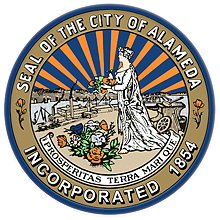What is Hazard Mitigation Planning?
Each year, in the United States, natural disasters take the lives of hundreds of people and injure thousands more. Nationwide, taxpayers pay billions of dollars annually to help communities, organizations, businesses, and individuals recover from disasters. Many natural disasters are predictable, and much of the damage caused by these events can be alleviated or even eliminated. Hazard Mitigation Planning is the process through which natural hazards that threaten communities are identified, likely impacts of those hazards are determined, mitigation goals are set, and appropriate strategies to lessen impacts are determined, prioritized, and implemented.
In the Emergency Management Cycle:
- Mitigation activities are actions that will prevent or eliminate losses, even if an incident does occur. Mitigation can reduce or eliminate the need for an emergency response and greatly reduce the recovery period. In addition, mitigation can protect critical community facilities, reduce exposure to liability, and minimize community disruption.
- Preparedness activities are the emergency plans, training, drills, and exercises that individuals, communities and first responders participate in on almost a daily basis. These are things done to get ready for an emergency or disaster before it happens. Click here to read more about what the City is doing for Disaster Preparedness.
- Response is the short-term, emergency actions taken to address the immediate impacts of a hazard.
- Recovery is the longer-term process of restoring the community back to normal or predisaster conditions.
The Disaster Mitigation Act of 2000 (DMA 2000) reinforces the importance of mitigation planning and emphasizes planning for disasters before they occur. DMA 2000 requires jurisdictions to have a FEMA approved Local Hazard Mitigation Plan in order to be eligible for post-disaster funds. The Local Hazard Mitigation Plans must be updated every five years.
City of Alameda Local Hazard Mitigation Plan
The City of Alameda (City) Local Hazard Mitigation Plan was first adopted in 2005 as an annex the Association of Bay Area Governments Local Hazard Mitigation Plan - Taming Natural Disasters. In 2011, the City updated and FEMA approved its Local Hazard Mitigation Plan as an annex to the 2011 Regional ABAG Plan. In 2015, the City formed an interdepartmental Planning Team, which led the City through the next 5 year update process. The product was a stand-alone Local Hazard Mitigation Plan just for the City of Alameda. The City conducted public outreach to understand the concerns and experiences of the general public and populations with special needs. The outreach included surveys and presentations to the Commission on Disability Issues and the Social Services and Human Relations Board. In October, FEMA issued proposed new flood insurance rate maps for Alameda County. The City conducted a public information program to inform Alameda residents and landowners of newly mapped coastal flood risks. The new Local Hazard Mitigation Plan contains the latest modeling and understanding of the major natural disasters threatening Alameda, as well as a list of recommended mitigations to lessen the impact of these hazards to the people and assets of Alameda. One of these mitigations is on-going public education.The City of Alameda Hazard Mitigation Plan, June 2016, was reviewed and approved by the California Office of Emergency Services (CalOES) and FEMA and adopted by the City Council on October 18, 2016.
For questions, please contact:
Erin Smith
Public Works Coordinator
510-747-7938
Links & Resources
California Governor's Office of Emergency Services, My Hazards






